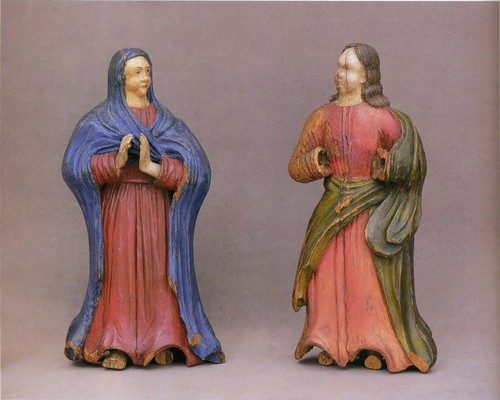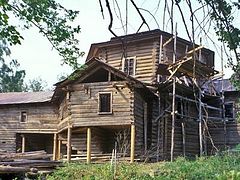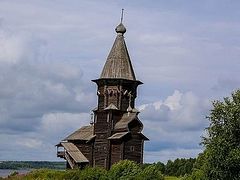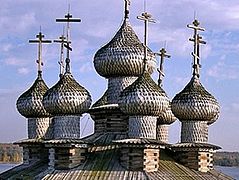Source: Russian Culture
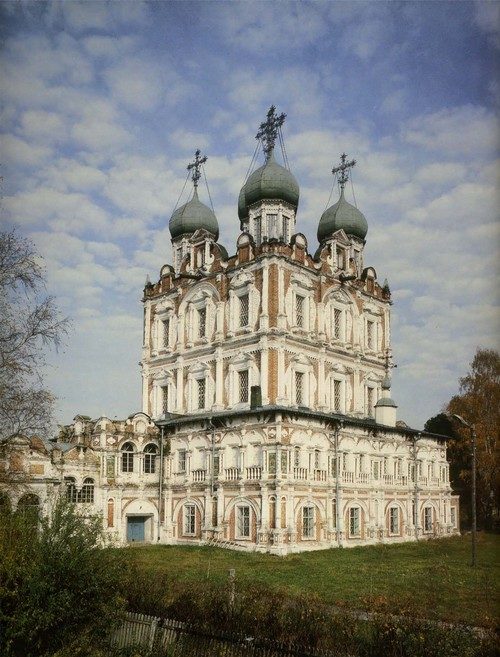
In the Middle Ages in the north – in Kargopol, Kholmogory, Archangel, the Solovetsky and Anthony-Syisky Monasteries, in bigger villages of the Northern Dvina, the Pinega and the Mezen areas there existed workshops where skillful craftsmen worked, carving out of wood statues of saints, remarkable for their epic power and expressiveness. The same masters carved many-tiered iconostases, adorned with ornamental and sculptural decor for many wooden and stone churches in villages, towns and monasteries on the vast territory of the region. This region was also famous for small-scale works of plastic art. In trade centers, villages and monasteries many craftsmen lived who executed with great mastery delicate miniature carvings of wooden, stone and bone icons, panagias (images worn round the neck by bishops), diptychs, triptychs and crosses.
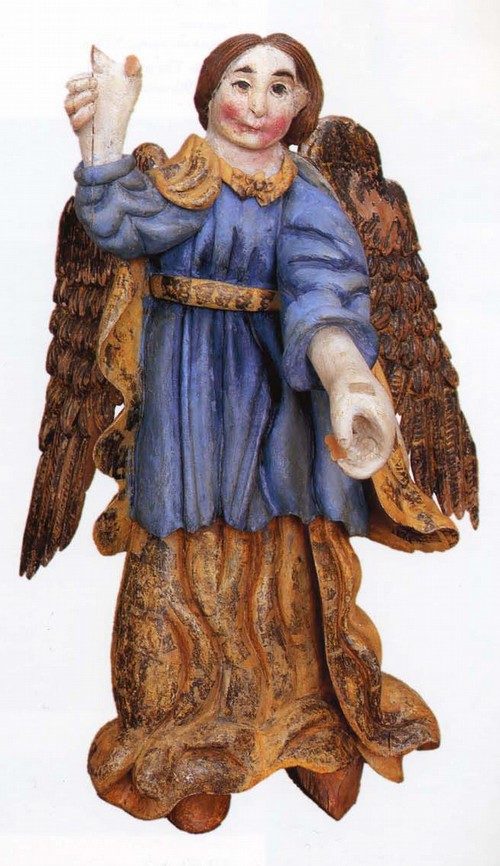 Angel. 19th century
Angel. 19th century With the passage of time the Russian North with its cathedrals, churches, Old Believers, and small and secluded monasteries, became the holder of extensive collections of wooden sculptures, small-scale works of plastic art, carved Sanctuary doors, iconostases and Church utensils. This collection appears to possess unique examples of high mastery of Central Russian artists and original specimens of wooden sculpture and ornamental carving of the Russian North as well. This art originated in pagan idols and in each stage of its development was strongly influenced by folk art traditions, and the natural artistic culture of the large agricultural region.
The fate of wooden sculpture and iconostasis carving is dramatic. More than once prohibited by the Orthodox Church, decrees of patriarchs and Synods in the XVII-XVIIIth centuries, wooden sculptures and large carved icons have been preserved mostly not in big monasteries and cathedrals for which they were intended and where they were placed at first, but in chapels and churches of remote villages, in attics, cellars and in lumber rooms of smaller monasteries. But much later, in the XXth century iconostasis carving suffered its greatest losses. The mass closing of churches and monasteries in the 1920's-30's caused their rapid destruction, breaking into pieces numerous many-tiered iconostases, splendidly decorated with delicate gilded carving and Sanctuary doors with gorgeous ornamental and sculptural decor. Decades of selfless work of scientists, researchers, and leading restorers of the country were required to reconstruct separated ensembles of Church decoration, to gather, remove from remote regions and closed churches, and restore and pass to museum repositories hundreds of wooden sculptures and ornamental objects.
Many works of art are presented for the first time. The introduction and catalogue of published works of art provide information about the workshops and centers of wooden sculpture and carving and review the main trends and periods of development of this art.
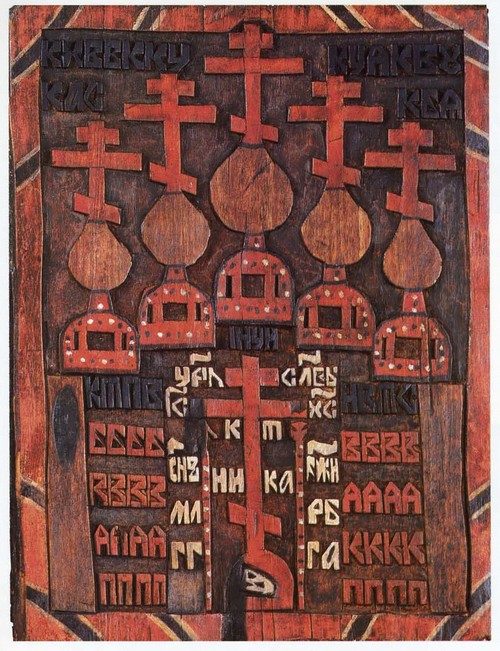 18th century
18th century 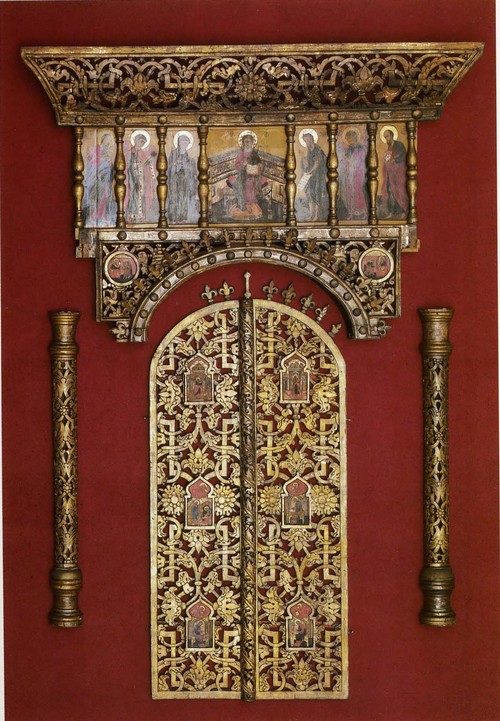 17th century
17th century 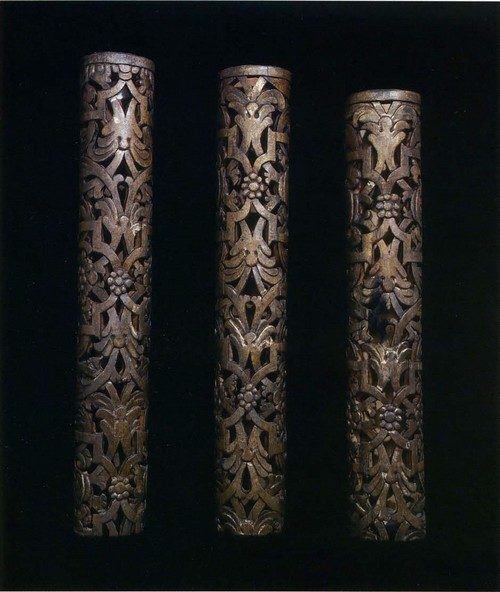 Pillars of iconostasis. Second half of 17th century
Pillars of iconostasis. Second half of 17th century 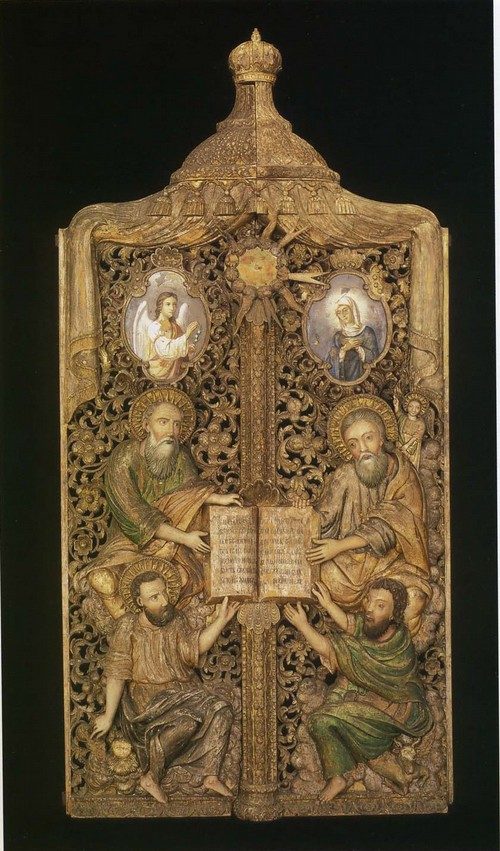 Late 17th – early 18th century
Late 17th – early 18th century 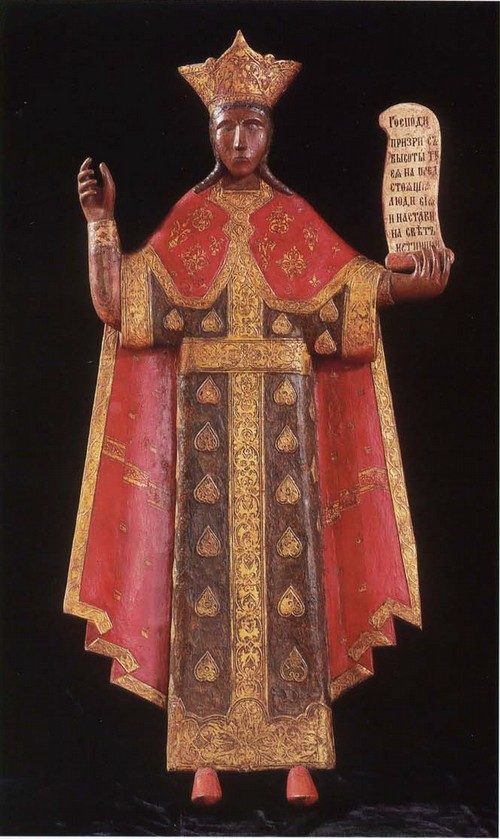 St. Catherine. 17th century
St. Catherine. 17th century 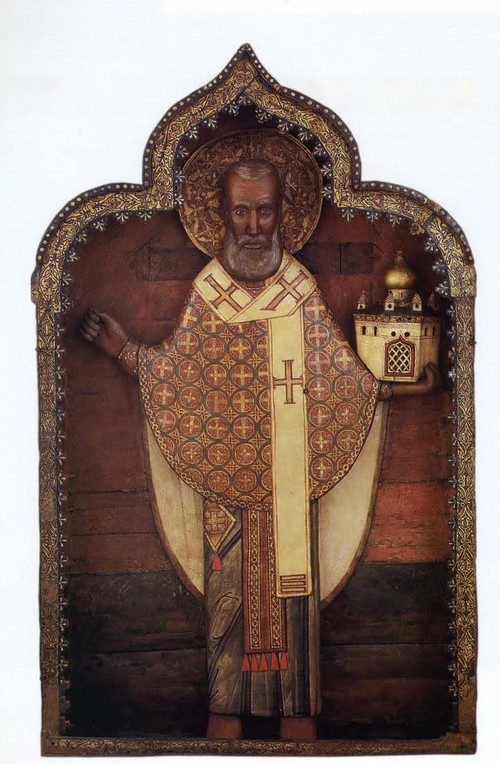 St. Nicholas of Mozhaisk, in case. Late 16th – 17th century
St. Nicholas of Mozhaisk, in case. Late 16th – 17th century 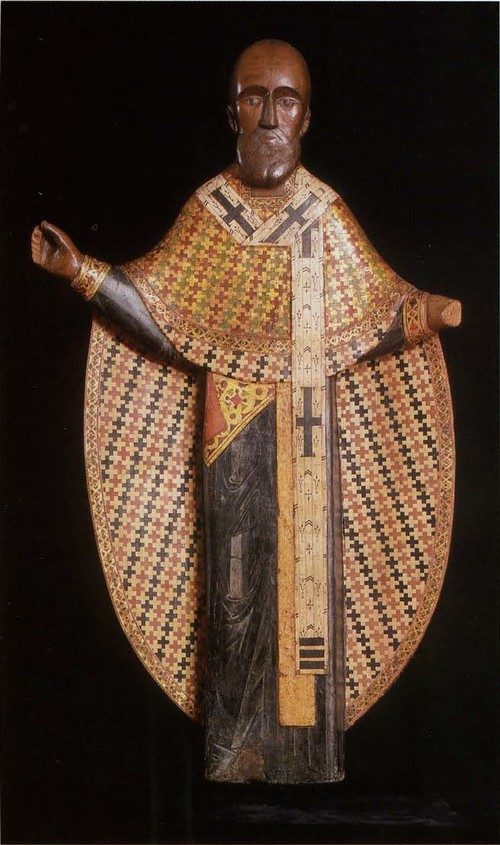 St. Nicholas of Mozhaisk. 17th century.
St. Nicholas of Mozhaisk. 17th century. 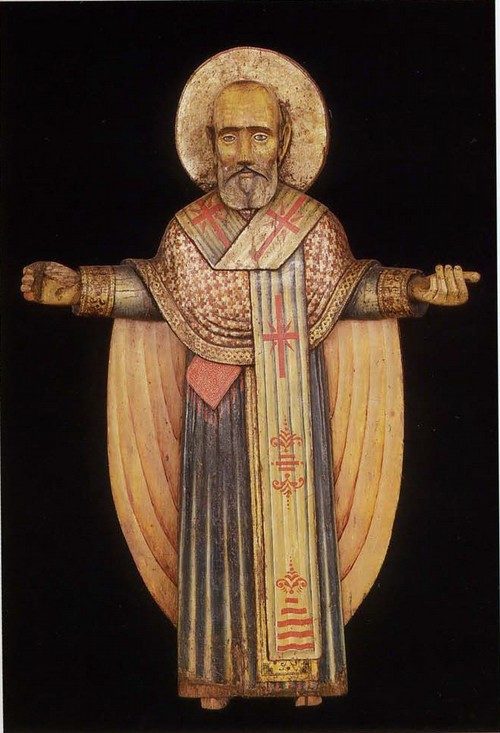 St. Nicholas of Mozhaisk. Late 17th – early 18th century
St. Nicholas of Mozhaisk. Late 17th – early 18th century 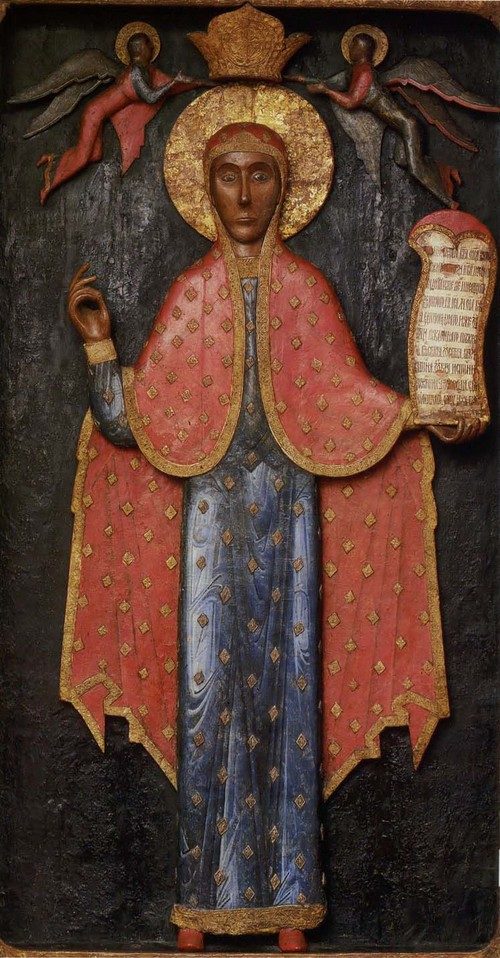 St. Paraskeva, in case. Second half of 17th century
St. Paraskeva, in case. Second half of 17th century 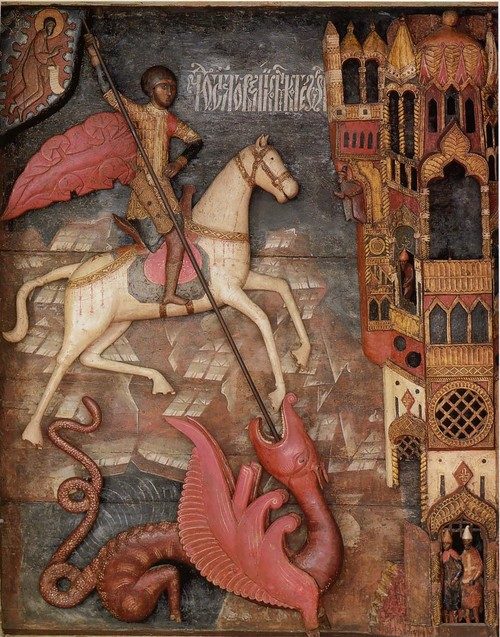 The Miracle of St. George and the Dragon, in case. 17th century
The Miracle of St. George and the Dragon, in case. 17th century 
